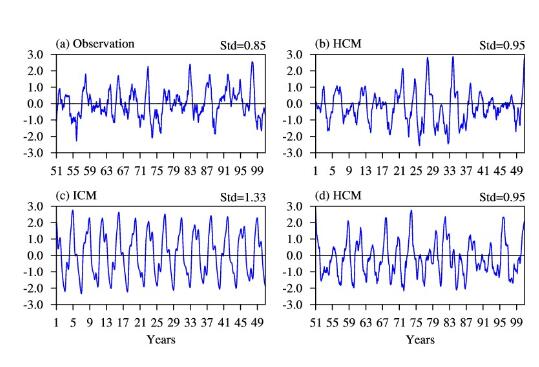Scientists never stop to develop and improve different ENSO models with varying complexities, according to Dr. Rong-Hua Zhang, Distinguished Scientist at the Institute of Oceanology, Chinese Academy of Sciences (IOCAS), and one of the authors of a recently published study.
The intermediate coupled models (ICMs), using simplified models of the ocean and the atmosphere, have been widely used for ENSO studies. The IOCAS ICM, developed by Dr. Rong-Hua Zhang, has routinely issued ENSO real-time predictions for international communities since 2003, which is even competitive to some state-of-the-art CGCMs. In view of the simplicity of its atmosphere model, the IOCAS ICM still needs to be improved.
Dr. Zhang and his team--a group of researchers from the Institute of Oceanology, Chinese Academy of Sciences, and Pilot National Laboratory for Marine Science and Technology--have had their work published in Advances of Atmospheric Sciences.
By coupling the ocean model of IOCAS ICM with the global atmospheric general circulation model ECHAM5, instead of the statistical one, a new hybrid coupled model (HCM) has been constructed. The HCM can not only realistically reproduce ENSO characteristics in terms of irregularity, frequency, amplitude, and seasonal phase-locking (Fig. 1), but also simulate observed patterns of global atmospheric anomalies related to ENSO.
This HCM provides a new modeling tool for ENSO studies, capable of simulating ENSO-related global climate. Nevertheless, how to use this model to predict realistic ENSO events and global climate, which needs to be studied further.

Fig. 1 Time series of SST anomalies averaged over the Nino3.4 region from (a) observation, (b, d) HCM and (c) IOCAS ICM. The results of the HCM and ICM are based on the model-year period of 1-100, 1-50 and the observation during 1951-2000 respectively.
Reference:
Hu, J. Y., Zhang, R.-H and Gao, C. 2019: A hybrid coupled ocean–atmosphere model and its simulation of ENSO and atmospheric responses. Adv. Atmos. Sci., 36(6), 643-657. https://doi.org/10.1007/s00376-019-8197-8.
|
|

Address: 7 Nanhai Road, Qingdao, Shandong 266071, China
Tel: 86-532-82898902 Fax: 86-532-82898612 E-mail: iocas@qdio.ac.cn


